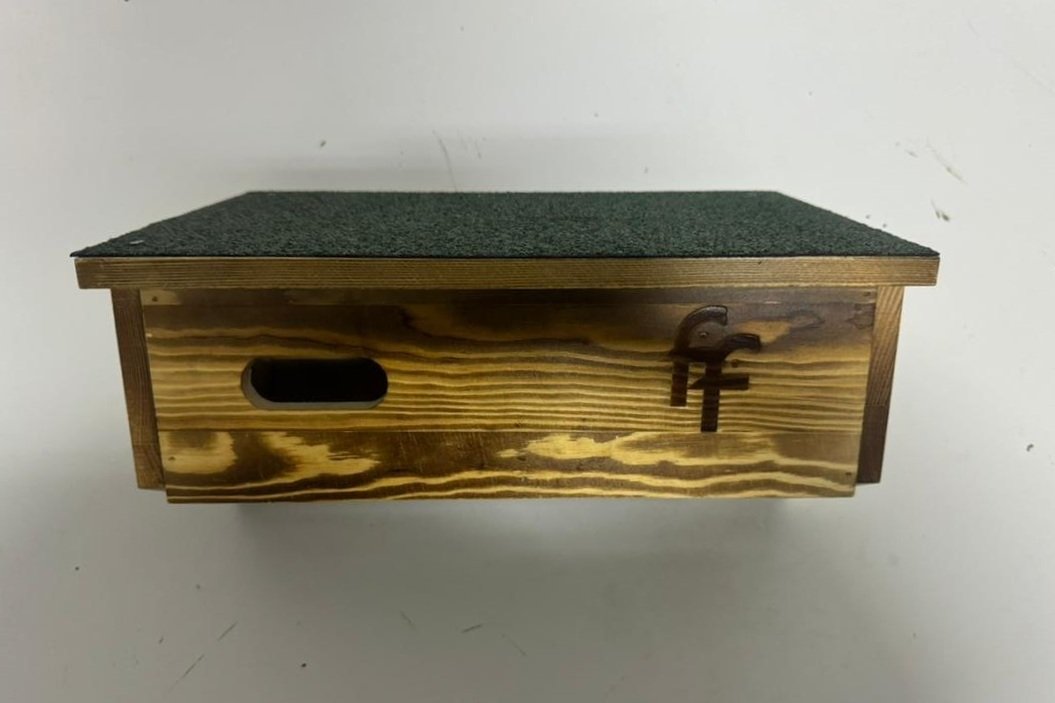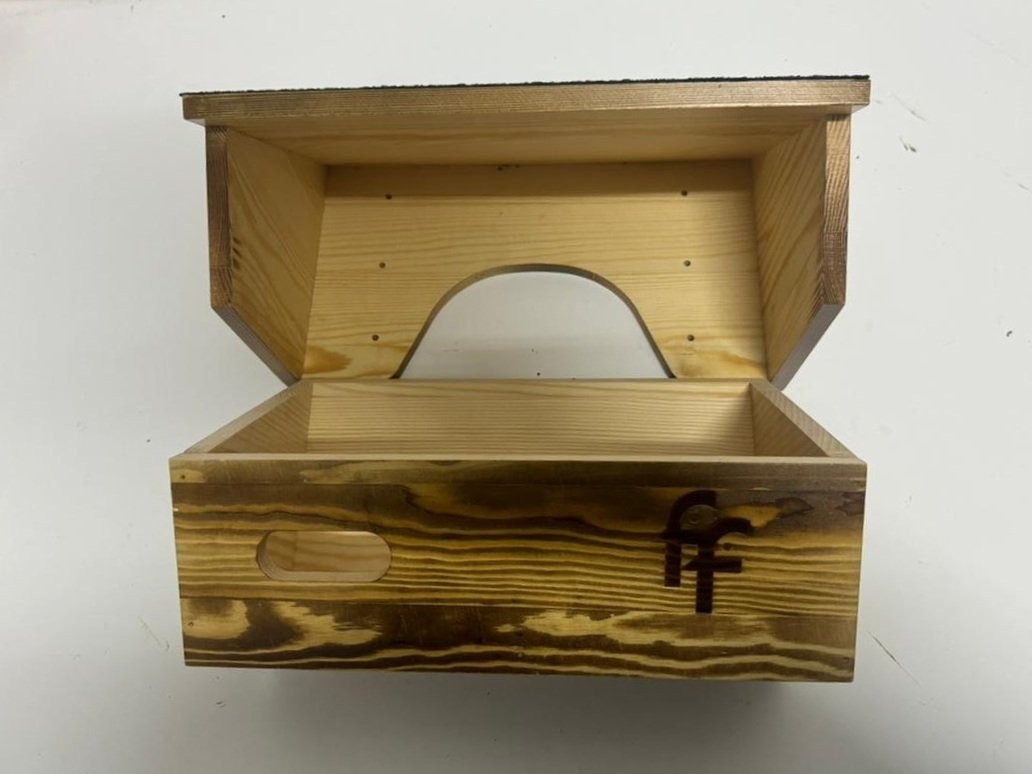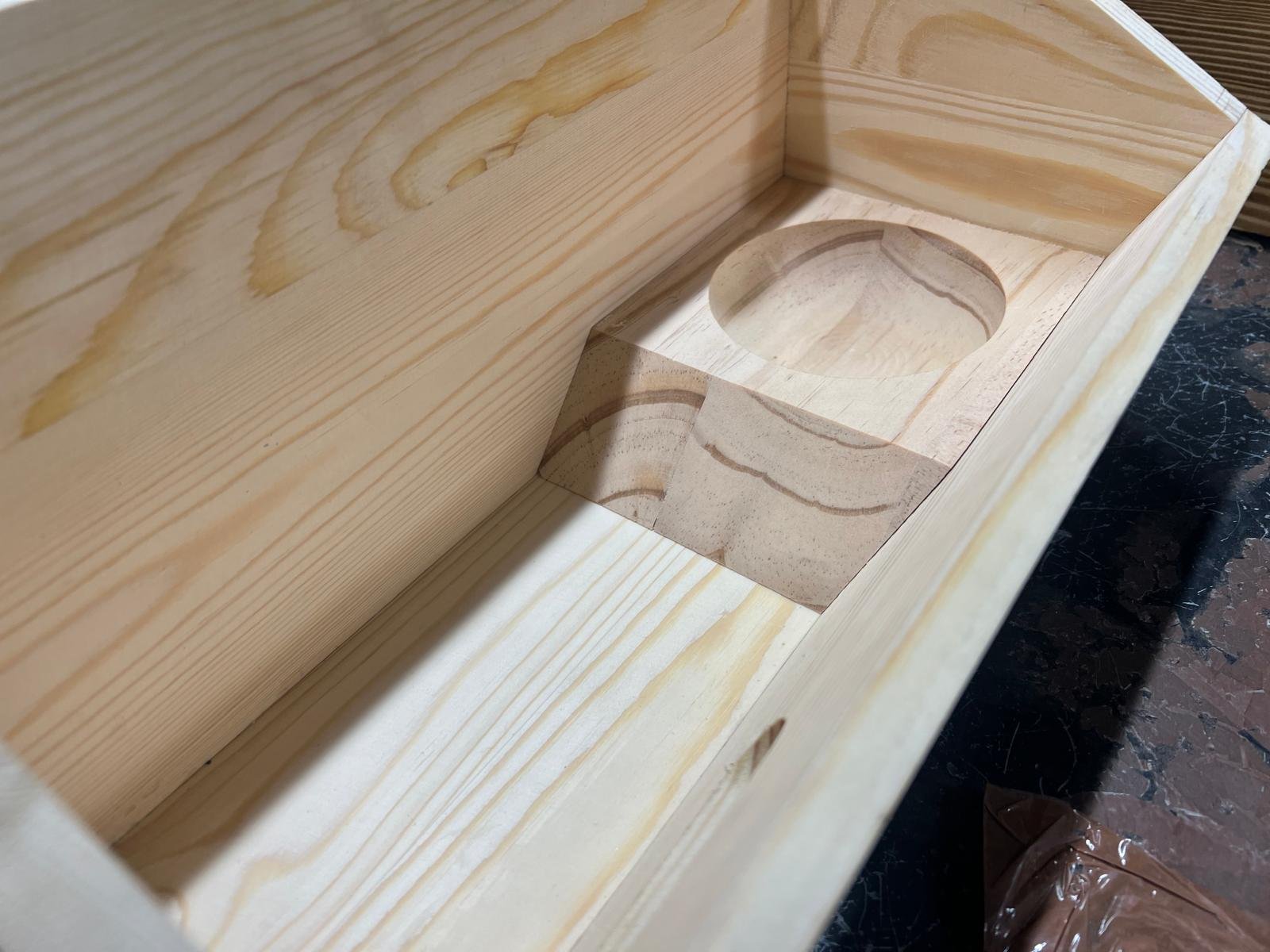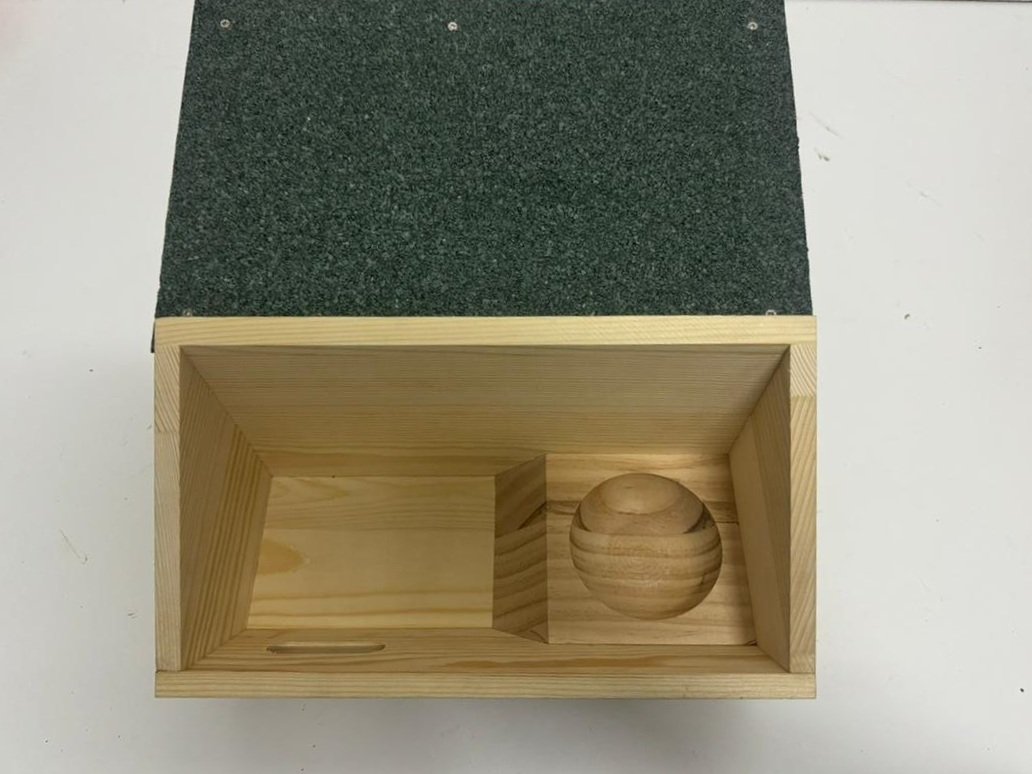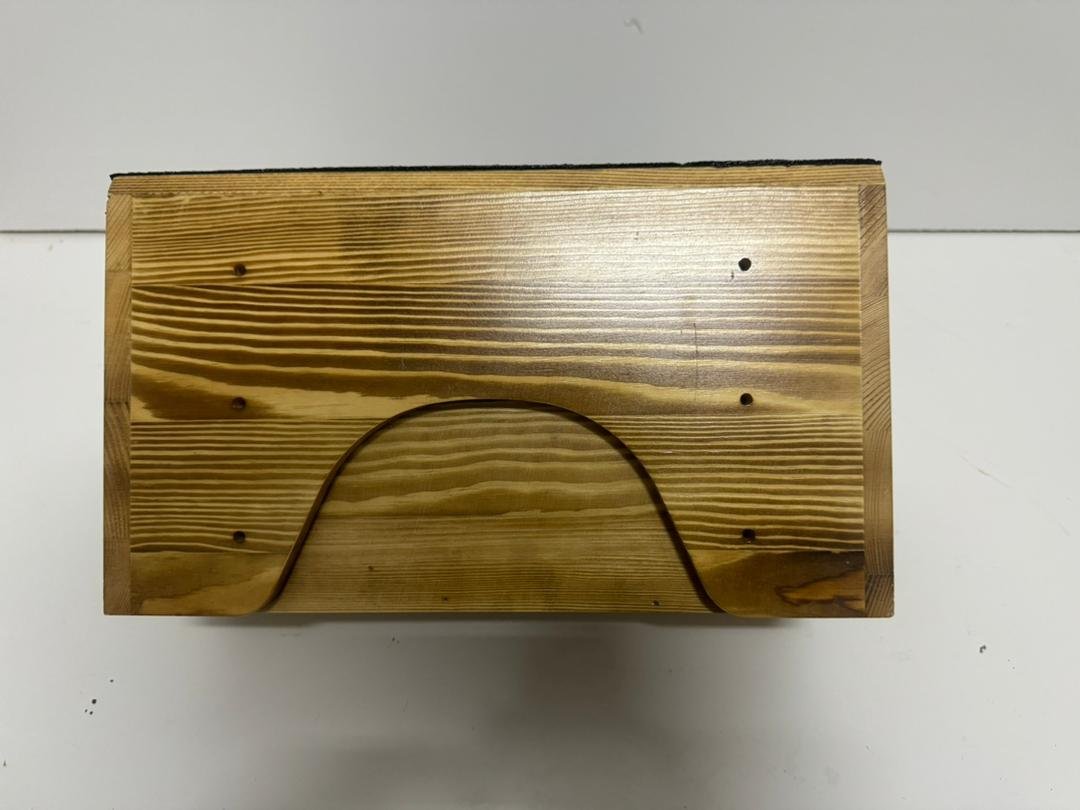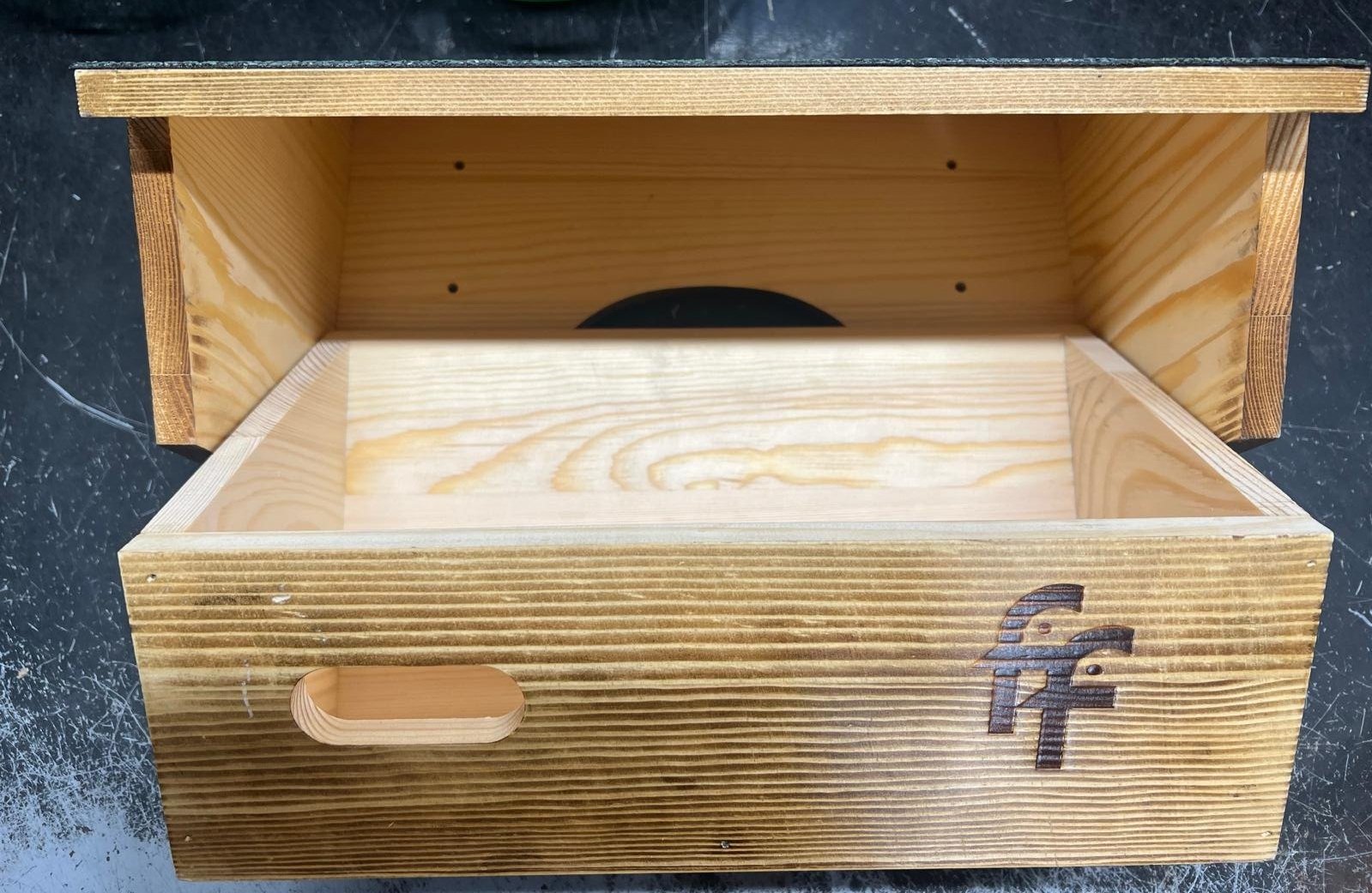Key Features
Removable base, so you can clean the nest box without having to take it down
Drain rod fixing allows base to be removed from the ground
Drain rod not included
£5 for every sale is donated to Gabo Wildlife
How to hang the nest box
Cleaning guidance
Size tbc
Weight. tbc
About
Swifts are Red Listed. They have suffered habitat loss principally because they have chosen to live close to us! In our Churches, factories, shops and homes. Put simply, the eves of buildings suited them just fine. As time has passed, our buildings have changed, our eves are sealed, nets to stop pigeons around our retail outlets stop Swifts as well. Then there are all the usual suspects, insect depletion, a changing climate, cats, glass and som much more.
Secondly, we are so lucky to have Swifts, they are a natural wonder. They eat, sleep and mate in the air, only landing to nest. Swifts fly at almost 70 MPH and travel from the UK to DRC in Africa every year and then return to the exact same place to nest.
Providing nesting for Swifts is special, when they leave they will live in your mind, until the day they return having flown around 9,000 miles. It is a way that we can support nature, and truly be part of the Swifts wonderful world.
Why Cleaner Swift Box? Here I have to thank my local Swift Group and specifically Carly Ahlen of GABO Wildlife. It is no secret that I am no birder! Through Carly and the group, I learned about three issues, firstly Swift Louse Fly. The Louse Fly is a parasite attaching itself to swift and living on the Swifts blood. Swift Louse fly is not fatal to the Swift, however in numbers they are a burden the Swift can live without. The Swift Louse Fly leaves its eggs in the nest and the next year’s chicks are then afflicted!
Next Plastics. Swifts must catch their nesting materials in the air, traditionally Swifts caught feathers and other naturally occurring products. Today, they catch plastic. In urban areas up to 60% of a Swifts nest is now plastic. Far from an ideal nesting material plastics can become attached to chicks and do not help with drainage aid movement and temperature regulation.
Finally, “Swift Only” signs don’t work. Often people go to the trouble of installing a Swift box only to find it is occupied by Starlings or Sparrows.
That is where the engineer gets to work. A two piece box that can be easily and safely separated. We can install the nesting element of the box in April when the resident birds have already chosen where to nest, we can remove Swift Louse Fly eggs, and we can remove plastics from the box. I should also add a word of thanks to Edward Mayer of Swift Survival. Edward has been a great sounding boars through the design process. Edward gave me a tip that a new nest box with nesting material in it is likely to be occupied more quickly than an empty box. Edward a genuine thank you!
Key Features
Removable base, so you can clean the nest box without having to take it down
Drain rod fixing allows base to be removed from the ground
Drain rod not included
£5 for every sale is donated to Gabo Wildlife
How to hang the nest box
Cleaning guidance
Size tbc
Weight. tbc
About
Swifts are Red Listed. They have suffered habitat loss principally because they have chosen to live close to us! In our Churches, factories, shops and homes. Put simply, the eves of buildings suited them just fine. As time has passed, our buildings have changed, our eves are sealed, nets to stop pigeons around our retail outlets stop Swifts as well. Then there are all the usual suspects, insect depletion, a changing climate, cats, glass and som much more.
Secondly, we are so lucky to have Swifts, they are a natural wonder. They eat, sleep and mate in the air, only landing to nest. Swifts fly at almost 70 MPH and travel from the UK to DRC in Africa every year and then return to the exact same place to nest.
Providing nesting for Swifts is special, when they leave they will live in your mind, until the day they return having flown around 9,000 miles. It is a way that we can support nature, and truly be part of the Swifts wonderful world.
Why Cleaner Swift Box? Here I have to thank my local Swift Group and specifically Carly Ahlen of GABO Wildlife. It is no secret that I am no birder! Through Carly and the group, I learned about three issues, firstly Swift Louse Fly. The Louse Fly is a parasite attaching itself to swift and living on the Swifts blood. Swift Louse fly is not fatal to the Swift, however in numbers they are a burden the Swift can live without. The Swift Louse Fly leaves its eggs in the nest and the next year’s chicks are then afflicted!
Next Plastics. Swifts must catch their nesting materials in the air, traditionally Swifts caught feathers and other naturally occurring products. Today, they catch plastic. In urban areas up to 60% of a Swifts nest is now plastic. Far from an ideal nesting material plastics can become attached to chicks and do not help with drainage aid movement and temperature regulation.
Finally, “Swift Only” signs don’t work. Often people go to the trouble of installing a Swift box only to find it is occupied by Starlings or Sparrows.
That is where the engineer gets to work. A two piece box that can be easily and safely separated. We can install the nesting element of the box in April when the resident birds have already chosen where to nest, we can remove Swift Louse Fly eggs, and we can remove plastics from the box. I should also add a word of thanks to Edward Mayer of Swift Survival. Edward has been a great sounding boars through the design process. Edward gave me a tip that a new nest box with nesting material in it is likely to be occupied more quickly than an empty box. Edward a genuine thank you!

